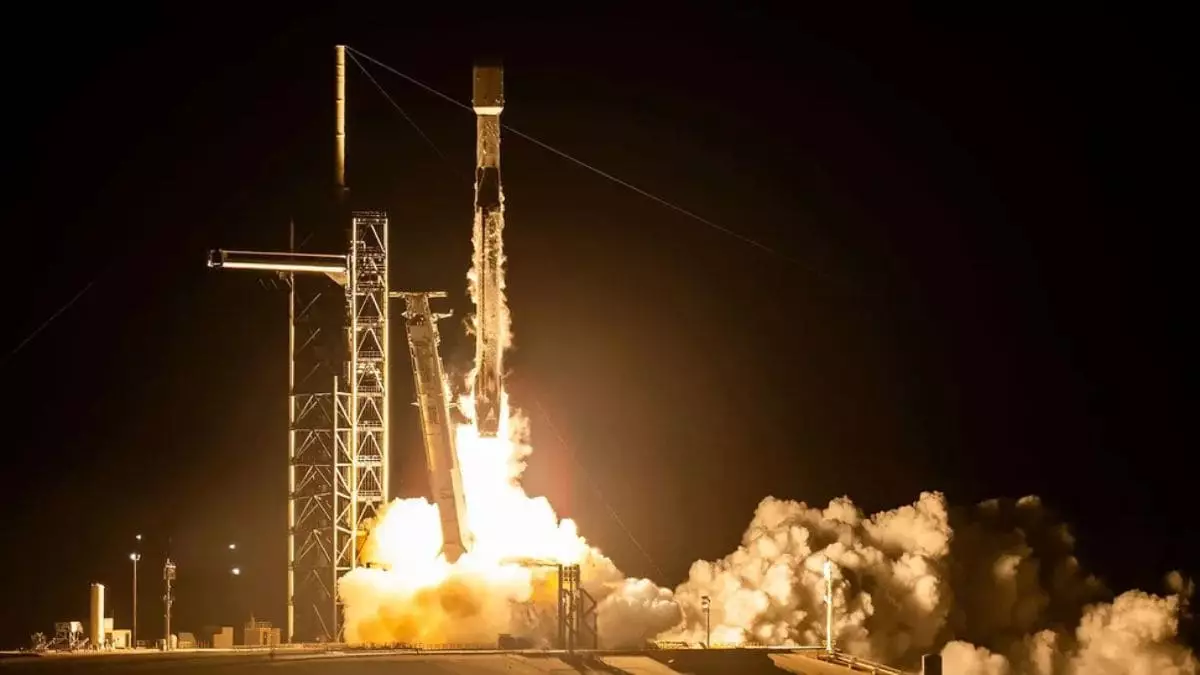In a move that has sent ripples through the space exploration community, SpaceX plans to achieve an unprecedented 170 orbital launches by 2025. This aggressive goal, announced by Anne Mason, the director of national security space launch at SpaceX, is a testament to the company’s relentless pursuit of efficiency and cost-effectiveness in space transportation. If successful, it would eclipse the record of 134 launches set in 2023, heralding a new era of space operations where the cadence of rocket missions could soon rival daily commutes.
This ambition not only showcases SpaceX’s innovation in rocket reusability but also hints at a strategic shift in how we perceive space missions—transforming what was once a rare spectacle into a routine affair. However, one must wonder whether society is ready for this relentless pace, where the sky could become cluttered with a constant stream of satellites and missions.
Historical Context: From Sparse to Saturated Launches
Reflecting on SpaceX’s journey, the contrast is staggering. In 2020, the company managed only 25 launches—about two per month. Fast-forward to 2023, the dramatic leap to nearly four launches per week signals not just a technical leap, but an evolving vision of space logistics. It’s worth pondering: has the rapid pace of advancements in technology outstripped our ability to responsibly manage the burgeoning number of satellites and launches? Mason’s comments on the growing normalization of this launch frequency may come off as thrilling to some, yet the concern over space debris and potential collisions looms large, underscoring the dire need for robust regulation and accountability in commercial space ventures.
Starlink: The Engine Driving Growth
Much of SpaceX’s increased launch frequency can be attributed to its Starlink project—a low Earth orbit satellite constellation designed to provide global internet coverage. With the ambitious goal to enhance global connectivity, over 7,500 Starlink satellites now pepper the skies, and 48 of the 64 completed launches this year were exclusively for this purpose. This is where the double-edged sword of technological advancement cuts deeper; while it promises better connectivity, it also raises questions around monopolization of space resources. Competition should be the cornerstone of innovation, yet when one company consolidates so much power in orbital operations, we risk sacrificing the principles of a fair market.
The Future of Space Travel and Its Implications
SpaceX’s intention to ramp up operations further highlights how commercial space travel is evolving from a cutting-edge dream to a commercial reality. With Falcon rockets spearheading these missions, the reliance on reusable technology is not just a cost-cutting measure; it’s a philosophical shift in the culture of space travel itself. That said, the pace of development brings with it questions about safety, ethics, and environmental impacts.
Mason’s acknowledgment of the team’s strong performance speaks volumes to the kind of dedicated workforce that underpins this ambitious vision. Yet, it invites a necessary- but uncomfortable- conversation: at what point does the pressure for increased output compromise safety protocols? As we approach this new epoch, it’s essential that we prioritize not just speed and efficiency, but a holistic approach that encompasses sustainability and ethical responsibility in our exploration of the final frontier.

